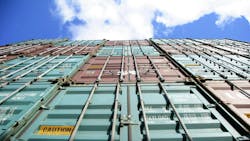The Baltimore Bridge Disaster, Two Weeks On: What You Need to Know
You don’t need an expert to tell you that global supply chains have hit rough waters in the past year, literally. Attacks on vessels in the Red Sea, low water levels in the Panama Canal and now the closure of a crucial East Coast port. One maritime mess after another.
The Dali cargo ship’s fatal collision with Baltimore’s Francis Scott Key Bridge two weeks ago made headlines around the world, leaving the public and businesses baffled at how something like this could happen and wondering how to stop it from happening again.
Among U.S. ports, the Port of Baltimore ranks ninth for total foreign cargo value, handling $80.8 billion last year, according to Maryland Governor Wes Moore.
Manufacturing is closely intertwined with both global and domestic supply chains, and the ramifications of this port closure are still unfolding. Here’s what we know two weeks later and how it may impact you.
Behind the Headlines: Not Just Finished Goods
On the business side, the biggest news is the expected repercussions on the auto industry. Port of Baltimore records indicate it has handled more cars and light trucks than any other domestic port for the past 13 years. Farm vehicles and machinery are other big areas of impact due to the port’s roll on/roll off capabilities.
Less talked about is the collision’s impact on other types of shipments.
“One of the things that I haven’t seen covered as much is that there are impacts in terms of raw materials,” says Brandon Daniels, CEO of AI supply chain management company Exiger.
Daniels noted that both cane and beet sugar are large staples of the port’s imports. The disruption of such commodities has experts speculating about future price increases or shortages.
“In addition to that, there’s a large amount of unwrought aluminum that comes through the port,” he says. Any disruption to these types of products can create a domino effect downstream in the manufacturing process.
“Major manufacturing of buildings, major manufacturing of construction machinery, major manufacturing of sub-assemblies, major manufacturing in basically any large-scale aluminum-based products would be impacted by this port disruption,” Daniels says.
The Port of Baltimore is also a key hub for gypsum. “Gypsum is a mineral used in a wide variety of goods including fertilizer, toothpaste, shampoo and even sidewalk chalk. Interruptions to the supply of gypsum could have ripple effects in multiple industries, but the most concerning is the construction industry,” according to a project44 data report. “Gypsum is a key ingredient in drywall, plasters, ceiling tiles, building blocks and multiple other construction materials.”
Other disrupted imports affecting construction timelines are “things like plaster, plywood, veneered panels, laminated wood, poly vinyl goods, plastics, sheets, films … Those are mostly home construction or building construction goods that are subject to the same constraint,” Daniels says.
The news isn’t all bad, however.
“It’s an immediate impact, and then it starts to lessen or ameliorate very quickly because of the fact that we can ship into multiple ports,” he says. “Those are goods that can come through Georgia, South Carolina, New York, New Jersey ports. It’s not something where the port itself is critical to those raw materials coming in.”
Shipments Rerouted
Many shipments have been diverted to large East Coast ports. “Shipments originally destined for Baltimore are now being rerouted primarily to New York (41%), Norfolk (30%) and Newark-Elizabeth (10%),” according to the aforementioned project44 report.
“Having the Baltimore port out of commission for this period of time is going to have a fairly limited effect. It's only 4% of total trade volume on the U.S. East Coast,” says Daniels. “The ports of New York and New Jersey, by comparison, are about 38% of the East Coast volume, so they can absorb a lot of the spillover from the Baltimore port. So, from a long-term perspective, I think that these immediate impacts are lessened as shipments get rerouted and as other ports are utilized.”
Even though port congestion may not be a major issue, other challenges exist, such as increased processing fees and container prices, as well as ground logistics. A strain on the land logistics side will impact transportation to some major hubs and manufacturers in the Mid-Atlantic region, says Daniels.
With an increase of ground traffic congestion, “the U.S. supply chain will experience delays in cargo deliveries and perhaps temporary increased costs for trucking, but only in the short term,” says Siddharth Priyesh, vice president and head of Americas and Caribbean at CrimsonLogic.
Although the Baltimore region will likely see the most significant and long-lasting impacts, manufacturers in other areas are not in the clear.
“It is going to be more focused on the East Coast and Midwest, but the global supply chain is an interconnected network of goods and services that are delivered by intermediary and final goods manufacturers. So, when you have issues like this come up, it affects all logistics pricing, it affects all goods prices,” says Daniels. “From a supply chain and manufacturing perspective, it does have a systemic ripple effect when it first occurs,” Daniels says.
A Lesson to be Learned
Although most of the country won’t be radically impacted by the Port of Baltimore disaster, it leaves us with one question: How do we avoid something like this in the future?
“The most significant impact long term is going to be the transformation that will need to happen in major ports and in major shipping lanes from a logistics perspective,” says Daniels. “We need to invest in our infrastructure such as bridges, because we can't have bottlenecks like this that disable our ability to transport.”
Ever since the initial shock of the bridge collapse left businesses scrambling, experts have emphasized one message: visibility and flexibility are key. The seemingly endless bombardment of supply chain issues of the past five years marks a new reality in the logistics landscape.
“These are systemic impacts of an increasingly strained global supply chain," he says. "One of the things that we should be talking about is the fact that organizations that are going to succeed and thrive for the next 20 years are going to be the ones that understand that this is not episodic. This is interconnected, and they have to be more proactive about understanding and monitoring their supply chains and having redundancy.”
About the Author
Anna Smith
News Editor
News Editor
LinkedIn: https://www.linkedin.com/in/anna-m-smith/
Bio: Anna Smith joined IndustryWeek in 2021. She handles IW’s daily newsletters and breaking news of interest to the manufacturing industry. Anna was previously an editorial assistant at New Equipment Digest, Material Handling & Logistics and other publications.

